Key takeaways:
- Safe spaces enable emotional expression and support, fostering open dialogue among individuals with diverse experiences.
- Gender equality enhances societal health and innovation, shaping future generations to challenge stereotypes and promote inclusivity.
- Advocacy is crucial for addressing societal norms and empowering voices, creating community solidarity and promoting awareness on important issues.
- Identifying safe space needs requires active listening and engagement with the community to ensure genuine reflections of their requirements.
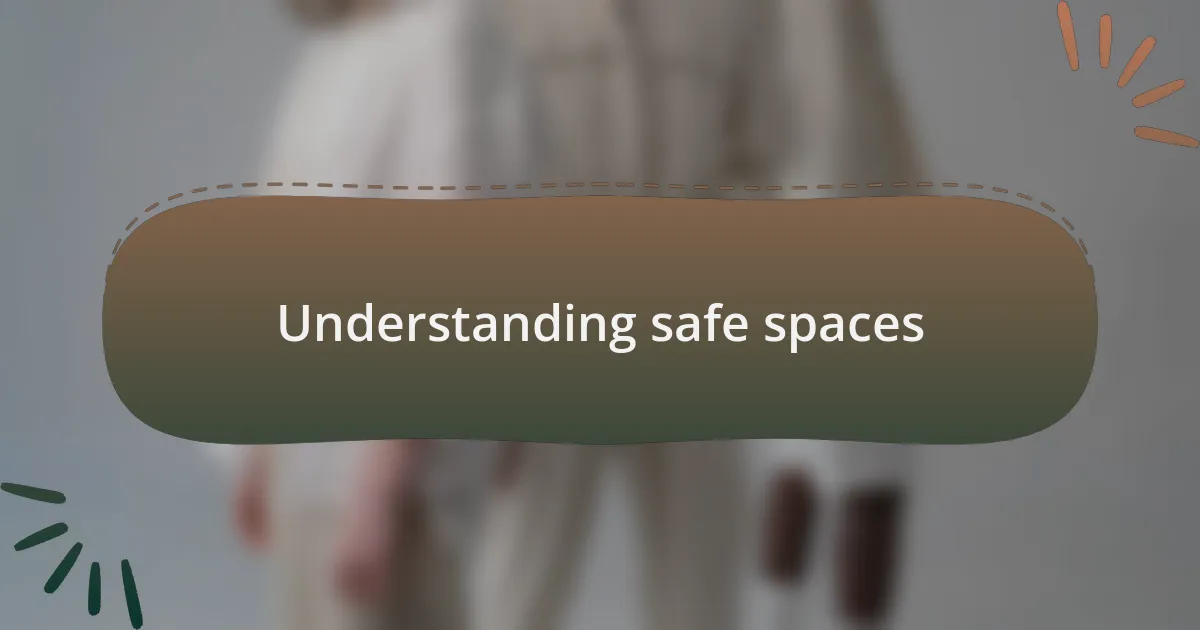
Understanding safe spaces
Safe spaces are more than just physical environments; they represent emotional sanctuaries where individuals can express themselves without fear of judgment. I remember the first time I stepped into a community center dedicated to youth. The atmosphere was almost palpable, filled with a sense of acceptance that made me ask, “What if I had this type of support earlier in life?”
These spaces foster open dialogue and support, allowing people to share their experiences and struggles. I once witnessed a group share their stories of discrimination, and it struck me how powerful it was to see tears transform into laughter, creating bonds instead of barriers. Can you imagine what a world would look like if everyone had access to a space where they felt truly seen and heard?
Furthermore, understanding safe spaces requires recognizing the diverse needs of individuals. For example, not everyone feels comfortable addressing their issues in group settings; some may prefer one-on-one interactions. Reflecting on my journey, I felt a wave of relief every time a facilitator took the time to check in with me personally, proving that even small gestures can make a significant impact.
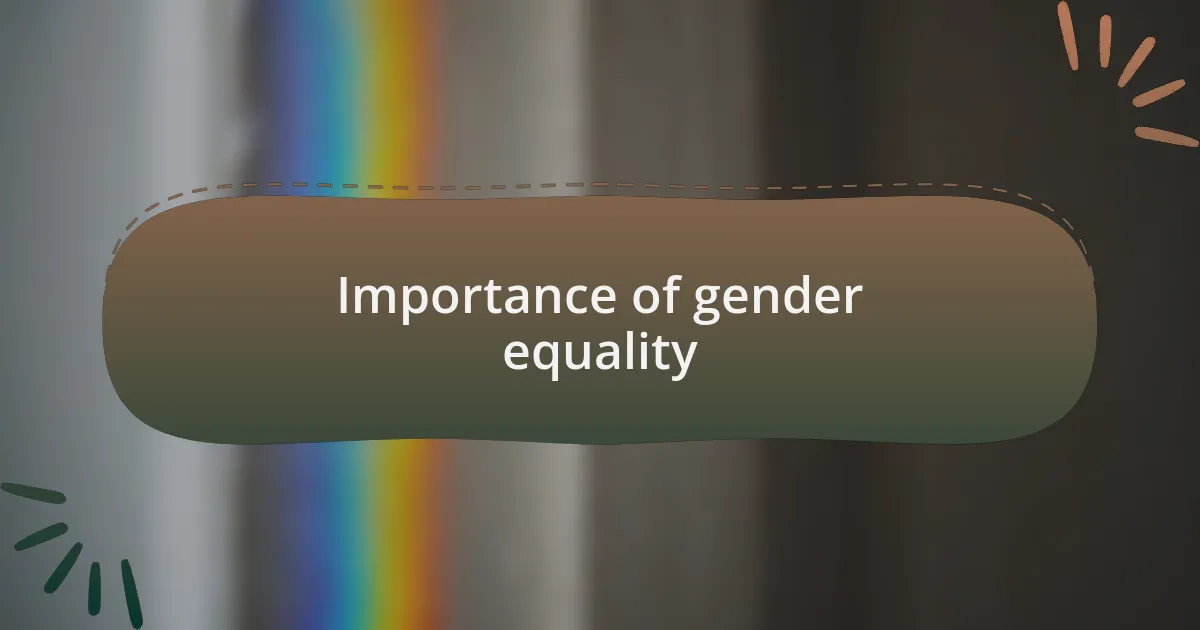
Importance of gender equality
Gender equality is essential for fostering healthy societies and empowering individuals. When all genders have equal rights and opportunities, we see not just economic growth but also enhanced social cohesion. I recall attending a discussion where an inspiring speaker shared her struggle for equal pay; her story illuminated the tangible impact of inequality and reminded me that many are still fighting these battles daily.
Moreover, achieving gender equality enriches our perspectives and innovation. In my experience, diverse teams produce more creative solutions, as each voice brings unique insights and experiences to the table. I often think back to the collaborative projects I’ve participated in, where mixing different viewpoints led to breakthroughs I hadn’t anticipated—it’s amazing how that kind of synergy unfolds!
Finally, the importance of gender equality extends beyond individual success; it influences future generations. Observing my friend’s daughter grow up in a household that champions equality shapes her worldview. She confidently challenges stereotypes and envisions a world where everyone thrives equally. Isn’t it inspiring to think that nurturing such values today can create lasting change for tomorrow?
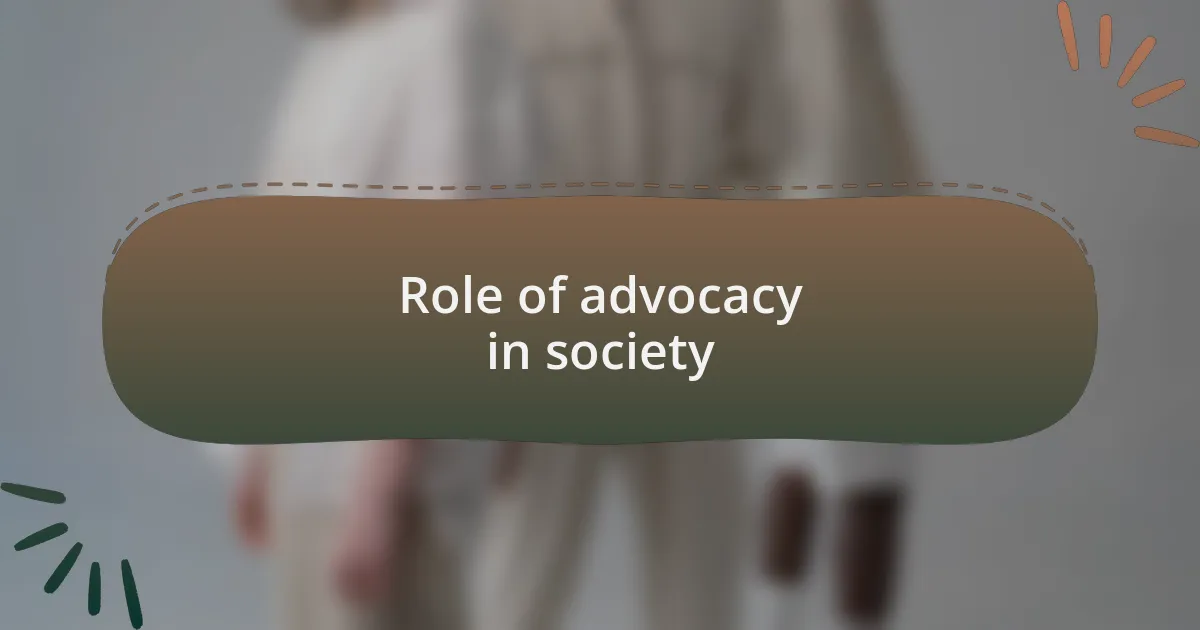
Role of advocacy in society
Advocacy serves as a vital cornerstone in society, shaping the conversation around important issues like gender equality. I remember a community rally I attended a few years back, where passionate advocates shared their stories and demands for change. The energy was palpable; it felt as if we were all part of a movement larger than ourselves, driving towards a collective goal of fairness and justice.
One of the most profound roles of advocacy is its power to challenge societal norms. I’ve seen firsthand how a well-placed campaign can shift perceptions and raise awareness about issues that may have gone unnoticed. For example, a local initiative I supported focused on educating young people about consent. It opened dialogues in schools and homes, making conversations about respect and boundaries commonplace—what a remarkable shift that was!
Furthermore, advocacy empowers individuals by providing platforms for their voices to be heard. I once met a woman who had started a blog to discuss her experiences with workplace discrimination. Her courage inspired others to share their stories, creating a ripple effect that mobilized a community. Isn’t it incredible how a single voice can spark a larger conversation, fostering solidarity and understanding among us all?
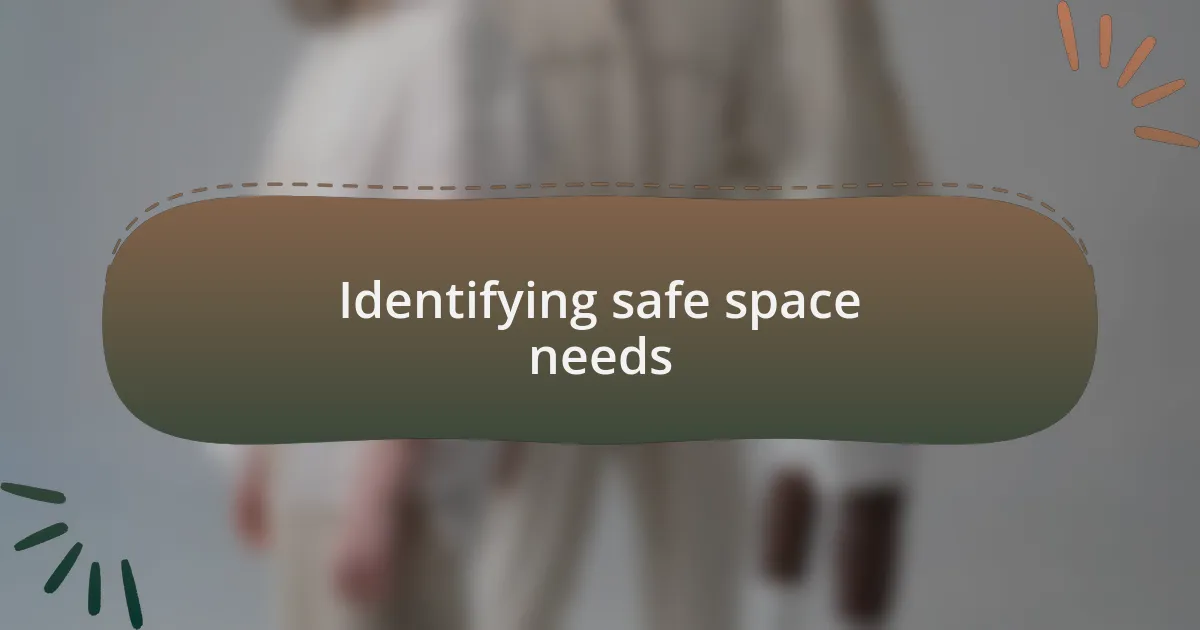
Identifying safe space needs
Identifying the needs for a safe space often begins with listening to the voices within the community. I recall attending a focus group where individuals shared their stories of vulnerability. Their insights illuminated specific aspects of what safety meant to them—whether it was the absence of judgment or the assurance that their identities would be respected. How can we truly create safe spaces without first understanding these unique needs?
In my experience, it’s crucial to engage in open conversations that reveal the diverse requirements of different groups. I once facilitated a workshop where participants expressed their desires for support in navigating microaggressions in public settings. It was enlightening to see how their requests varied, emphasizing that one-size-fits-all solutions seldom work. How can we expect to meet everyone’s needs if we don’t prioritize this dialogue?
Lastly, I’ve learned that active participation is essential in identifying safe space needs. Collaborating with community members to gather feedback not only builds trust but also ensures that the spaces created are genuine reflections of their requirements. I remember initiating a survey that asked specific questions about comfort and accessibility, and the responses were invaluable. Isn’t it amazing how a simple act of inquiry can foster a sense of belonging and ownership?
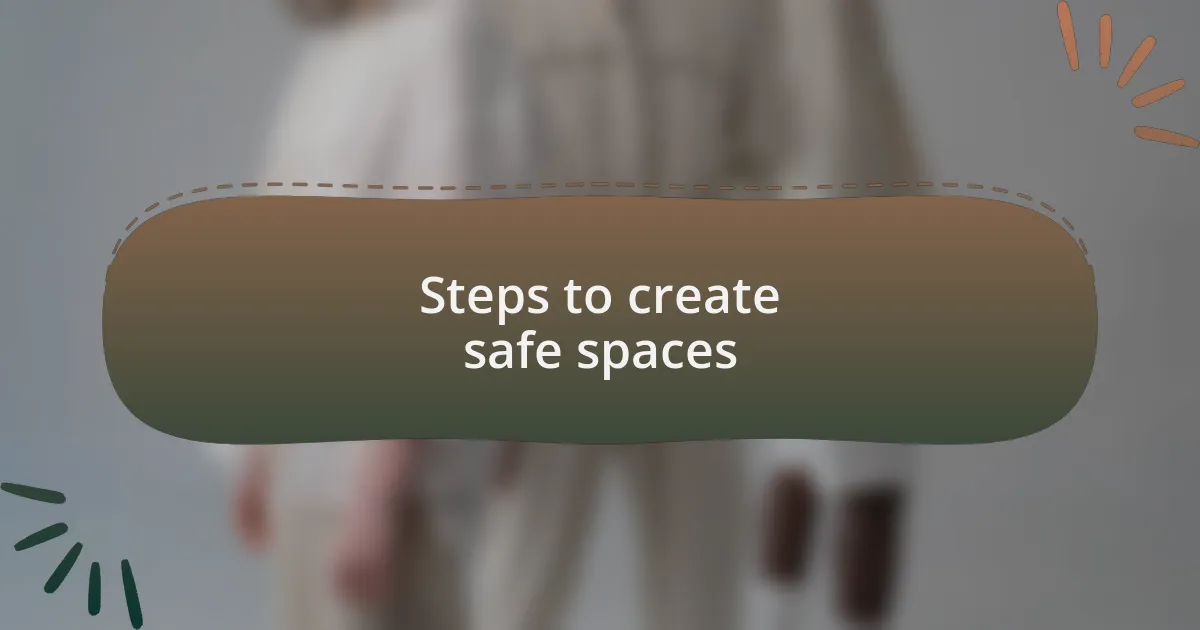
Steps to create safe spaces
Creating safe spaces involves taking actionable steps that stem from understanding community needs. One effective method I use is to host regular feedback sessions. In one instance, a participant opened up about feeling isolated due to their gender identity. Their courage to share sparked a series of heartwarming discussions that led us to establish a peer support group. Isn’t it fascinating how one voice can catalyze change?
Next, I emphasize the importance of establishing clear ground rules. During a community retreat I facilitated, we collectively created guidelines for respectful communication. The sense of ownership fostered an environment where everyone felt empowered to speak. When participants feel safe to express themselves within clear boundaries, the space begins to thrive. How often do we take the time to set these essential parameters?
Another key step is ongoing training for facilitators and community leaders. I remember participating in a workshop focused on trauma-informed practices. It opened my eyes to the nuances of interpersonal dynamics and the impact of unrecognized trauma on interactions. By equipping leaders with these critical skills, we pave the way for a more inclusive atmosphere. How can we support others if we aren’t proactive in our own growth?
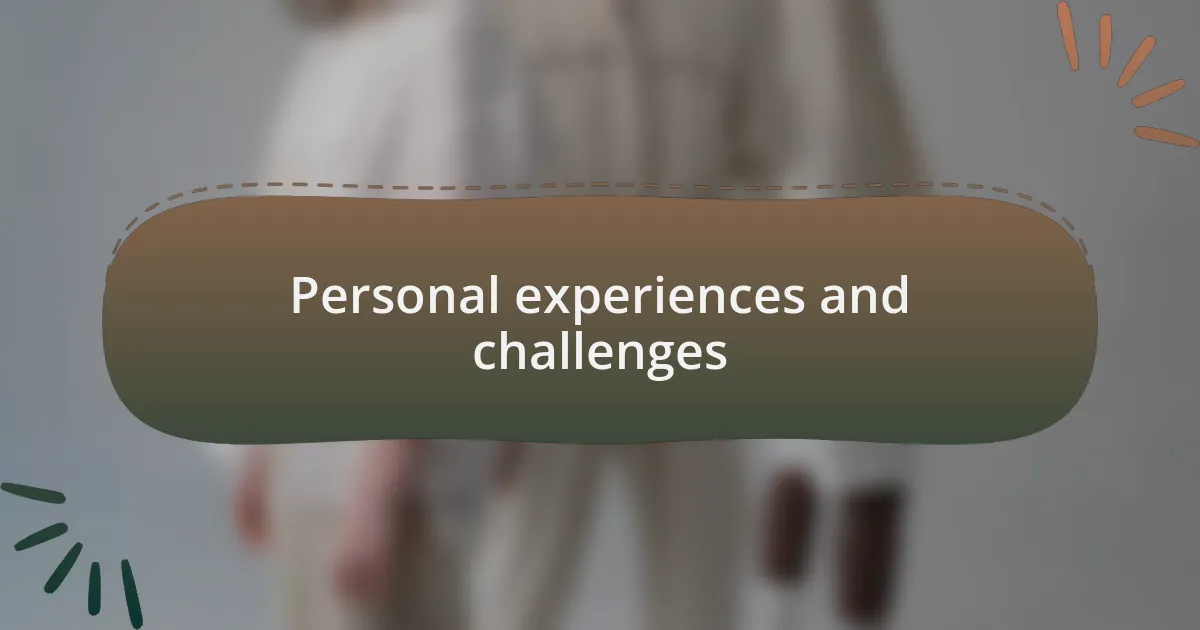
Personal experiences and challenges
Creating safe spaces has not been without its challenges for me. I recall a time when I encountered pushback from a group resistant to discussing gender issues. It felt disheartening at first, but I realized that their reluctance stemmed from fear of the unknown. Reflecting on that experience made me understand the importance of patience and empathy. How can we move forward if we don’t first meet others where they are?
In another instance, after a workshop, a participant confided in me about their struggles with acceptance in their personal life. They felt like they were risking everything to be their true self, and it struck a chord with me. I had navigated similar fears when I first started advocating for gender equality. This connection deepened my commitment to creating a safe space where vulnerability could flourish. Isn’t it incredible how shared experiences can bridge gaps?
There are also moments that test my resolve. I vividly remember an incident where one individual’s negative comments disrupted a supportive atmosphere. It was challenging to address the situation without alienating anyone. In that instance, I learned the importance of constructive conflict resolution and the power of compassion in healing wounds. How do we balance honesty and kindness in such moments? It’s a constant learning journey that I embrace with an open heart.
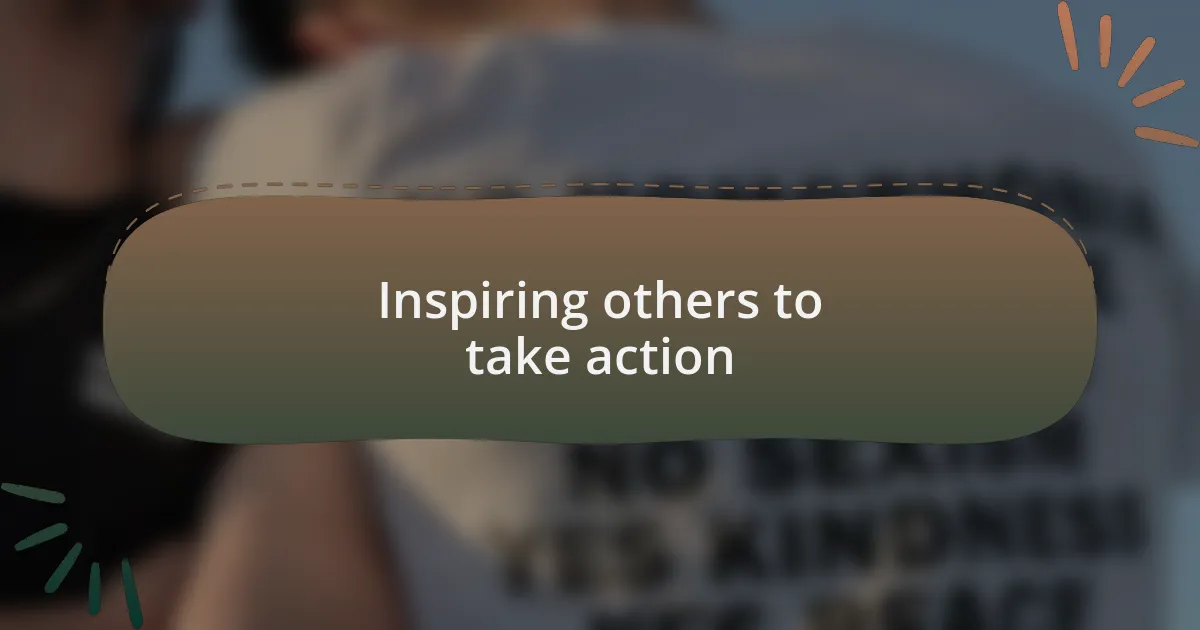
Inspiring others to take action
In my journey, I’ve discovered that inspiring others often means leading by example. I remember a community meeting where I shared my own story about overcoming fear in advocating for gender equality. The room felt charged with emotion as others began to share their own narratives. When we open up about our vulnerabilities, it ignites a spark in others—don’t you think that authenticity is contagious?
I often encourage those around me to take small, actionable steps toward creating inclusive environments. One of my colleagues once decided to organize casual coffee meet-ups for women in our workplace, fostering connections that blossomed into mentorships. Seeing how these small gatherings transformed into powerful networks was incredibly rewarding. Isn’t it fascinating how one simple idea can ripple through a community, creating waves of change?
Sometimes, the simplest words carry profound weight. During a presentation on gender inclusivity, I asked the audience, “What does a safe space mean to you?” The diverse responses were eye-opening and showed me how differently we all perceive safety. This not only inspired individuals to reflect deeply on their experiences but also encouraged them to advocate for change in their own circles. How can we create more moments that spark such reflections? It’s certainly something I strive for every day.